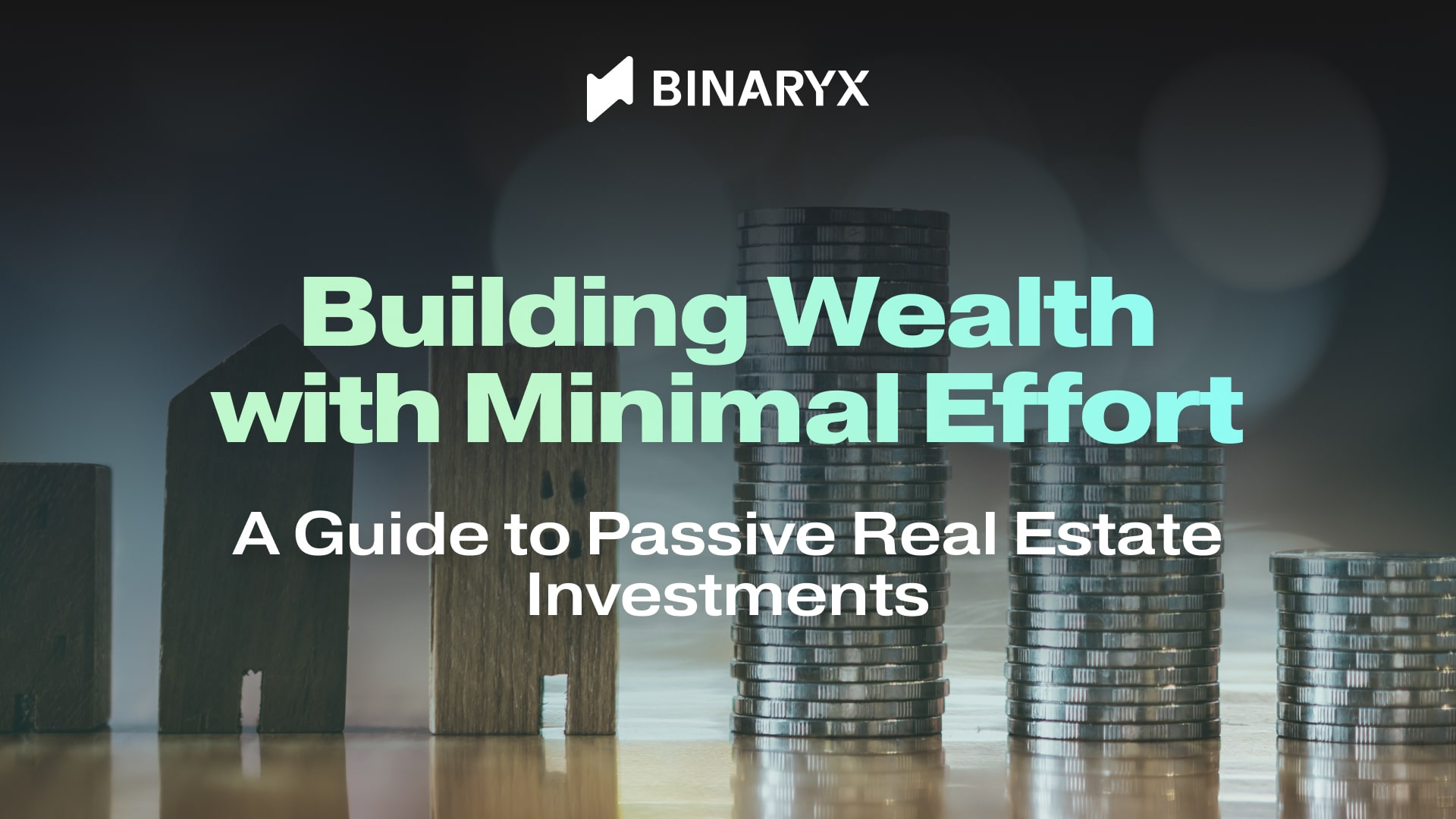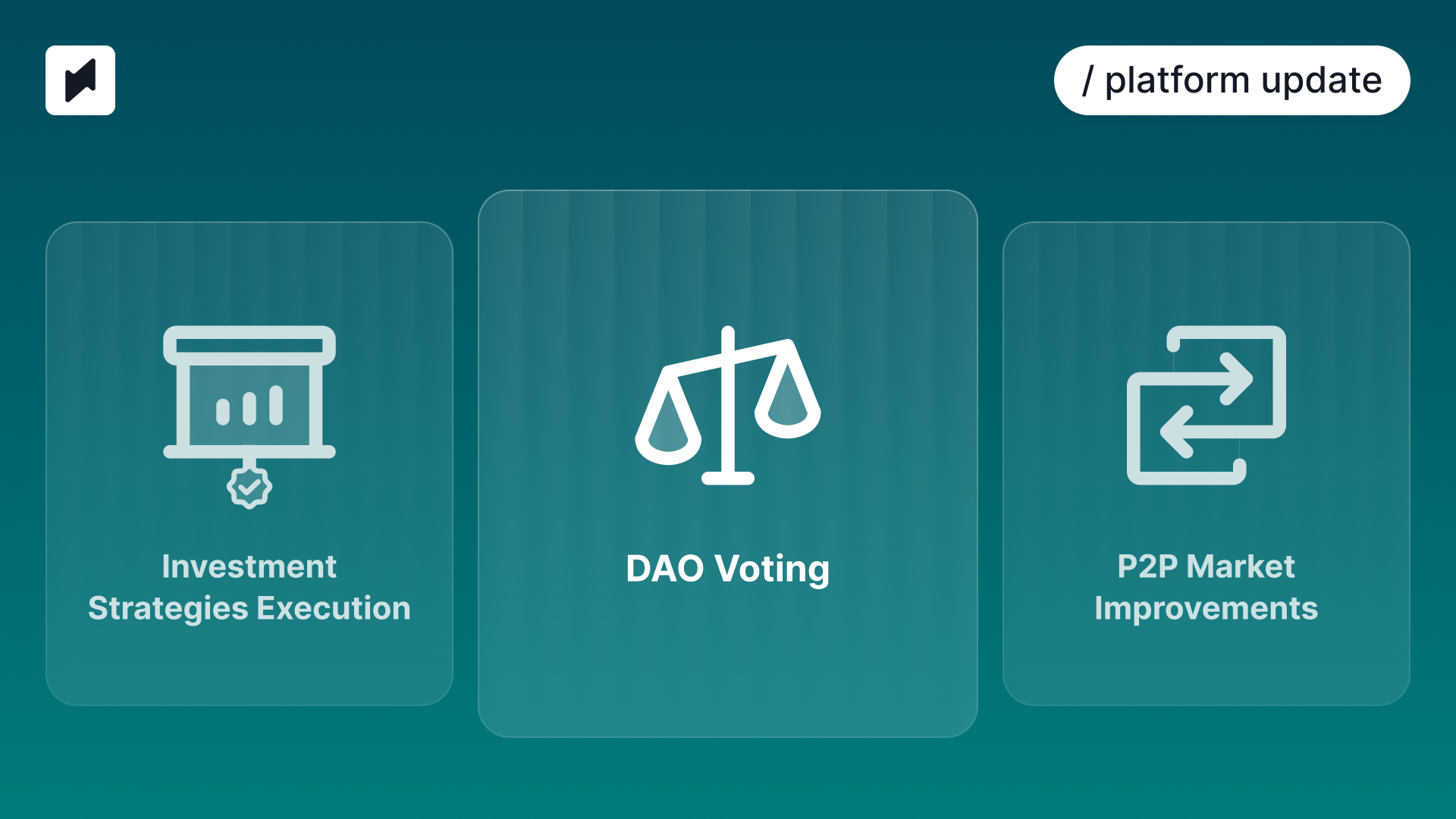Who wouldn't want to generate income with little to no effort? Many people think passive income, especially in real estate, offers low returns that barely beat inflation. However, modern technology is changing this. New automation tools and investment platforms can help you greatly increase your passive income. Now, it's not just possible—it's highly rewarding. Let's look at how you can build a passive income strategy that goes beyond traditional investing methods.
What Makes Real Estate Investing Passive?
Passive income in real estate is typically associated with rental income, but achieving truly passive returns requires more than just owning a property. To receive rental income consistently, you must first find reliable long-term tenants, a task that can be time-consuming and challenging. A more passive approach would be to delegate this responsibility to a professional property management company. By paying them a commission, you offload the day-to-day hassles of tenant management and property upkeep and enjoy a steady stream of income with minimal involvement on your part.
In essence, passive real estate investing means that after making an initial investment, you do not need to engage in ongoing active efforts to generate income. There are multiple ways to achieve passive income, depending on the level of involvement you're willing to commit to initially. Let’s dig into them.
Types of Passive Real Estate Investing
Whether through delegated property management, investing in REITs and ETFs, or exploring other ways like investing through crowdfunding and tokenization platforms, the key is to ensure that your income flows in with little to no additional effort on your part.
Delegating Properties to a Property Management Company
One of the most common methods of passive real estate investing is delegating the management of your property to a professional property management company. These companies take on the day-to-day responsibilities of property ownership, including tenant screening, rent collection, maintenance, and even legal compliance. By paying a commission or a percentage of the rental income, you can enjoy a steady stream of income without any additional fuss. This approach is particularly beneficial for those who own multiple properties or live far from their rental units.
Investing in Real Estate Investment Trusts (REITs)
Real Estate Investment Trusts (REITs) are companies that own, operate, or finance income-generating real estate across various sectors, such as residential, commercial, and industrial properties. By purchasing shares in a REIT, you can earn a portion of the income produced through commercial real estate without having to buy, manage, or finance any properties themselves. The income typically comes in the form of dividends, making REITs a popular choice if you seek regular, passive income from real estate and don’t care about ownership.
Investing in Real Estate Mutual Funds or ETFs
Real estate mutual funds and exchange-traded funds (ETFs) are similar to REITs, as both represent baskets of assets. However, the key difference lies in the composition and management of these baskets. While REITs are companies that directly own and manage real estate properties, real estate mutual funds and ETFs may include a broader mix of assets, such as REITs themselves, real estate-related stocks, bonds, and sometimes direct real estate holdings. These funds pool money from numerous investors to build a diversified portfolio that often mirrors the overall performance of the real estate sector or a specific part of the sector. So, investing in real estate funds is highly passive, extremely conservative, and, as a result, typically offers modest returns compared to other forms of passive real estate investments.
Real Estate Crowdinvesting

Real estate crowdinvesting allows investors to pool their resources to fund large-scale real estate projects, whether to purchase an existing property or develop a new one. This method opens the door to investment opportunities that might otherwise be inaccessible to individual investors. Once the necessary funds are raised, the property acquisition and management are handled by a professional management company or the crowdfunding platform itself. This means you can enjoy passive income, with your involvement limited to monitoring your investment through regular updates from the platform.
Investing Through a Real Estate Tokenization Platform

Real estate tokenization is the most modern and flexible method of passive real estate investing. In this approach, a property is divided into digital tokens, each representing an ownership share, which are stored and traded on a blockchain. By purchasing property tokens, you gain a proportional share of the rental income or resale profits generated by the property. The entire process is automated through smart contracts, ensuring that rental payments and income distributions are handled seamlessly, which makes your investment truly passive. This method is particularly attractive due to its enhanced liquidity, global accessibility, and 24/7 market availability—you can easily buy, sell, or trade property tokens on secondary markets whenever you choose.
Main Reason to Consider Passive Income Investing
Investing is often driven by the desire to eventually stop working and fully enjoy life. However, the irony is that in the pursuit of financial freedom, active investing can consume even more of your time and energy, leaving you with less of the personal time you're trying to secure. Active investing demands constant attention, from researching markets to managing properties and dealing with issues, which can quickly turn into a full-time job. In contrast, passive income investing offers a more natural path to achieving prosperity and living a worry-free, happy life. By choosing passive investing, you can grow your wealth while preserving your most valuable resource—time.
How to Get Started with Passive Real Estate Investing?
- Define Your Investment Goals
Clearly outline what you want to achieve with your real estate investments. Ask yourself specific questions. How regular should the income be? How often do you want to check on your investments? The more specific your answers are, the better your decisions will be when selecting investment opportunities. Knowing your goals will serve as the foundation for all subsequent steps in your investment journey. - Research the Market on Passive Investment Options
Explore the various passive real estate investment options available, such as REITs, real estate crowdfunding, and tokenized real estate. Understand the unique risks, potential returns, and required level of involvement for each option. This step demands the most time and effort, as gaining a comprehensive understanding of the market is crucial for making informed decisions. Be prepared to immerse yourself in research, as developing market knowledge will greatly enhance your confidence and ability to pick the right investments. - Choose an Investment Platform to Invest With
After determining your preferred investment method, select a reliable platform that matches your goals. Prioritize platforms with a solid track record, strong transparency practices, and a user-friendly interface. Make sure the platform supports the specific types of investments you’re interested in and offers features that align with your investment strategy. - Pick Multiple Investment Options and Start Small
Diversify your investments by selecting a few different options, that will help reduce your risk while you continue to learn. Start with smaller investments to familiarize yourself with the process and minimize potential losses. As you gain more experience and confidence, you can gradually increase your investment size and expand your portfolio. - Develop an Easy-to-Use Simple Investment Strategy
As you progress through the previous steps, you’ll gain insights into what works best for you. Use this knowledge to create a clear, straightforward investment strategy that outlines your actions in various scenarios—when to enter, when to exit, and what types of investments to pursue. A well-defined strategy will simplify your investing process and make it more passive because you will have an action plan.
The key to successful passive real estate investing is to complete these steps thoughtfully and thoroughly, but only once. By doing so, you can arrive at investment options that perfectly align with your personal goals. Once you’ve made your choices, all it should take is a single transaction to set your investments in motion, and then you can sit back and enjoy the passive income. However, if your strategy requires regular adjustments and ongoing management, you’ve essentially become an active investor. While this isn’t inherently bad, it does mean you haven’t achieved the primary goal of minimizing effort and time. In true passive investing, the objective is to let your money work for you, not the other way around.
Passive Investing Case Study
Probably the most passive way to invest in real estate is through a specialized real estate investing platform. These platforms come in various forms, often referred to as crowdfunding platforms, fractional platforms, or syndication platforms. While they differ in implementation, their core premise is to offer a hands-off method for real estate investing. These platforms handle all aspects of property management, from acquisition to rental income distribution, leaving you with the simple task of registering and providing funds.
Let’s illustrate this with a specific case study. Suppose you have $10,000 to invest in real estate. We are going to use the Binaryx Platform where you can invest in rental properties with attractive returns, and with entry points as low as $500. Imagine you decide to invest $5,000 in a rental villa in Bali with a 16.3% annual percentage rate (APR) and another $5,000 in a second rental villa in Bali with a 10.5% APR. Here’s what your first-year returns might look like:
- Rental Villa 1 in Bali (16.3% APR): $5000 * 16.3% = $815 over 12 months
- Rental Villa 2 in Bali (10.5% APR): $5000 * 10.5% = $525 over 12 months
- Total First-Year Income: $815 + $525 = $1340

After the first year, you can continue to receive passive rental income from both villas until the Binaryx Platform decides to sell the properties and distribute the proceeds to token holders proportionally to their shares. For an in-depth understanding of how it works, you can explore our detailed article on tokenization or check out a video from Oleg, our CEO:
Is Passive Real Estate Investing More Profitable?
All things being equal, active real estate investing obviously tends to be more profitable because it allows investors to directly manage their investments, take advantage of short-term opportunities, and make adjustments in real-time. However, the key factor in profitability isn’t whether you’re an active or passive investor, but rather the quality of your investment decisions and overall strategy.
If you’re highly active but lack a deep understanding of the market, being hands-on might actually lead to poor choices and increased risks. On the other hand, a well-prepared passive investor who has studied the market, developed a strong strategy, and set up an efficient investment process can achieve impressive returns with minimal involvement. The success of passive investing comes from careful planning and disciplined execution, allowing you to benefit from the market while freeing up your time. Ultimately, profitability in real estate investing is more about the investor’s knowledge, strategy, and discipline than the level of activity.
Output
Passive real estate investing has evolved significantly, with modern technology offering innovative ways to enhance returns while minimizing effort. By leveraging options like property management companies, REITs, real estate mutual funds, and emerging platforms such as crowdinvesting and tokenization, you can create a diversified portfolio that generates steady income with minimal ongoing involvement. The key to success lies in defining your investment goals, thoroughly researching the market, and choosing the right platforms to invest with. With careful planning and strategic execution, passive real estate investing can be a highly rewarding path to financial freedom. A solid option for passive real estate investment is the Binaryx platform—consider giving it a try.
Articles you may be interested in





.jpeg)




-min.jpeg)



.webp)